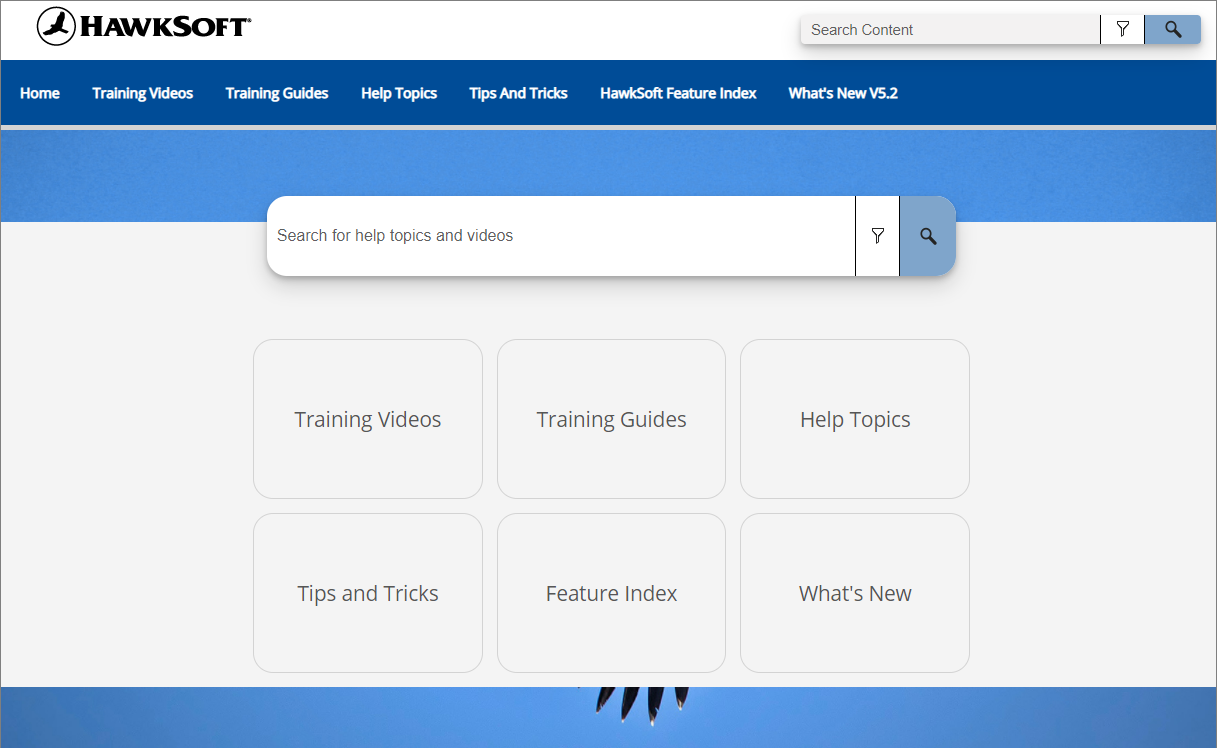Jeff White here, HawkSoft social media manager. In the past I’ve written about the 3 things you should do in every social media post and 4 things your agency should be doing on social media. Today, I’m going to offer tips on how your agency can create an effective social media campaign.

In this blog, I'll cover the three stages of the social media campaign process:
- Pre-launch: brainstorming, planning, and crafting
- During the campaign: monitoring audience engagement
- Post-campaign: debrief and creating a performance report
Disclaimer: These are my personal tips from my experience. The goal is for me to offer knowledge that might help your agency get started on your own campaigns.
Pre-launch
Ideas
First and foremost, I look at HawkSoft’s content calendar and see where there are holes. We have a certain number of posts we publish a week, and if there is a gap in the calendar, I brainstorm content to fill those gaps.
Questions I like to ask myself:
- What content can we put out that supports HawkSoft’s core values?
- Is there day/time relevant content that supports our core values?
- E.g. National Innovation Day supports our core value of Continuous Innovation.
- Are there any upcoming events that need promotion?
Cadence
Once you’ve got the creative juices flowing, it’s time to determine the cadence of the campaign (how frequently you will post about the subject). Is this a one-time post, or a topic you could do multiple posts around? This comes down to the topic’s importance to your agency’s overall marketing strategy.
For example, at HawkSoft we believe that independent agents own their data. We recently did an awareness campaign about how some technology vendors hold data hostage. This is important to us, so we posted about this topic on Facebook (and sent out an email) once a month for four months.
Cadence also is determined by the time sensitivity of the content. If you want to do a campaign around Thanksgiving, you wouldn’t want to start that campaign in the summer!
Content
After you have your cadence down, it’s time to start crafting your content for each platform you will be posting on. In my previous blog article, I discuss what type of content is preferred on each platform. Go back and read to help you determine where to post.
I’ve said this before, but I’ll say it again: your audience wants to see people. They don’t want to see images with a lot of text or AI-generated nonsense. I promised our content manager (Rachel, you’re the best!) that I wouldn’t get philosophical in this blog, but let me say one thing.
As humans, interactions between one another bring us a lot of joy, and the same goes for social media. Your audience wants to see smiling faces and real people - not stock images.
Because of this, I encourage agents to focus on quality posts over quantity. If you added up the performance on five stock image posts versus one post with smiling faces of members of your agency, I guarantee you the post with smiling faces will perform better.
Okay, I’ll step down off my soap box (but for how long?!)
Here’s a little cheat sheet on what platforms prefer in terms of content format:
- Facebook and Instagram: reels and multi-image posts
- LinkedIn: multi-paragraph posts focused on education and multi-image posts
- X: spark engagement with multi-lined, thoughtful posts with a question
Example
Here are a few examples of types of content your agency could do revolving around your agency attending a community event:
- Facebook/Instagram: a reel highlighting your agency spending time at the event. Take videos of speakers, signage, you with community members, etc.
- LinkedIn: a four-paragraph post (each paragraph has 2-3 sentences, split up by line breaks) about the value of attending community events
- X: post multiple photos from the event, thank those for allowing your agency to attend, and end the post with a thoughtful question to your audience
Scheduling
Once you have the content drafted, it’s time to schedule it. You can use a HawkSoft Partner to schedule social media content or use software that is dedicated to scheduling social media content. Here are a few options:
HawkSoft API Partners with social media tools:
Other social media tools:
Congratulations! You scheduled your content. You’re done. Or are you...
During the campaign
The hard part is done, but you still need to pay attention to the campaign. Is it important to respond to your audience if they comment?

If you remember my previous soapbox moment, human interaction is at the core of social media. So, if an audience member comments on your content, RESPOND. If it doesn’t warrant a full response, at least REACT to the comment.
By responding to comments and being engaged, not only are you showing the social media algorithms that you’re present, but you’re adding another interaction to nurture that client relationship.
The CEO of HawkSoft, Paul Hawkins, said this once and it has forever stuck in my head: “Sure, we are in the insurance business, but we’re really in the relationship business.”
A nurtured relationship with your client leads to a happy customer. What do happy customers do? They refer you to their friends.
Social media marketing is about more than likes, engagements, or reach. It’s about nurturing that relationship. During the campaign, nurture that client relationship and stay in the know on what your audience is saying.
Post campaign
You made it! For real this time? Well, almost…
Once a campaign is done, take a look at how it went. Questions I like to ask:
- What went well with the campaign?
- Is there something we could improve on?
- Was there a type of post that didn’t perform well compared to others?
- How did it perform in relation to last year’s iteration of the same campaign? (if applicable)
- Should we continue this campaign in the future, and what would we do to improve performance?
I also look at the analytics to see how the content performed. On each platform, I make note of performance in the following categories:
- Facebook and Instagram: Views, people reached, interactions, followers gained, interactions per view percentage.
- LinkedIn: Impressions, clicks, reactions, followers gained, and interactions per impression percentage.
When determining if a campaign was successful, I typically look at the metric of “interaction per impression.” This is the percentage of people who interacted with the content. Keep in mind that the same person can view content multiple times. That’s why I look at views/impressions versus people reached.
When I calculate interactions per impression, I simply do this formula:
# of interactions / # of impressions or reach
I then multiply the result by 100 to get a percentage. #math
If the campaign is recurring, I then compare it to the previous year’s campaign. If that percentage goes up, that’s good. If it’s gone down or stays stagnant for a few years, it may be time to end this campaign and explore other ideas.
One last soapbox…
Here’s my final soapbox of this blog (I told you I wasn’t done): it’s not all about analytics.
There are some intangible things that social media does, such as nurture the client relationship, that can’t be measured.
If your campaign doesn’t succeed the first time, try it a few more times. You can’t judge the success of a campaign after one try. When you teach your kid to ride a bike and they fall for the first time, do you let them give up? No, you encourage them to try it again.
Social media is a great tool to add value to your business by offering another outlet to interact with clients.
Don’t get caught up in “going viral” or get lost in the vanity metrics that people throw around. I feel another soapbox moment coming, so I’m going to stop there.
I’ll see you when I see you.

4 things your agency should be doing on social mediaGet more tips on how to post more effectively on social media from HawkSoft's Social Media Manager, Jeff White. |







